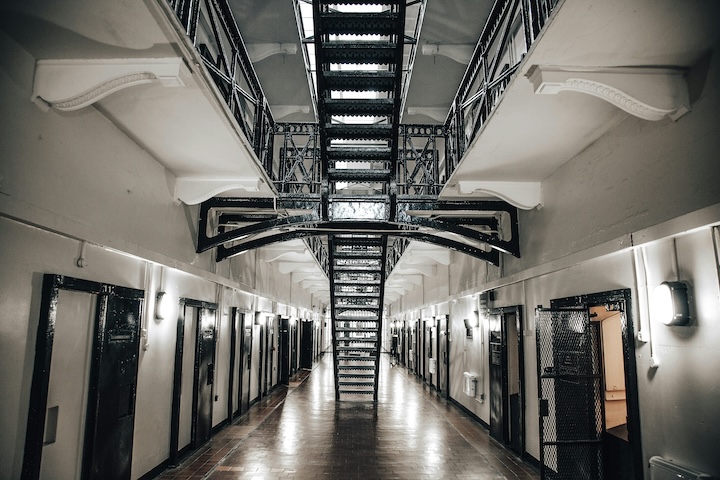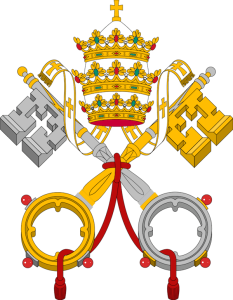The Catholic Church, Pope Francis, and the Death Penalty: Pros and Cons
by CAPP-USA

Let’s examine the death penalty pros and cons through the lens of Catholic social teaching.
What is the Death Penalty?
The death penalty refers to capital punishment, by which a criminal is put to death by a legitimate authority for serious crimes against human life and the common good.
Only a legitimate court of law has the right, in the eyes of the Church, of sentencing someone to capital punishment. “Legitimate public authority has the right and duty to inflict penalties commensurate with the gravity of the crime.” (CCC, 2266)
History of the Death Penalty in the Church
Unlike other practices, like abortion and homosexuality, which received resounding condemnation from the earliest days of the Church, pronouncements on the death penalty were more nuanced. While early Christians abhorred the killing of others, preferring to be martyred than resist persecution, they recognized the state’s right to capital punishment.
St. Clement of Alexandria, in the second century, said, “When one falls into any incurable evil…it will be for his good if he is put to death”. (Stromata 1.27)
Referring to an execution, St. Ambrose, in the 5th century, told a Christian judge: “You will be excused if you do it, but you will be admired if you refrain when you might have done it”. (Letter, 25)
His student, the great St. Augustine, justified the death penalty when there was “no other established method of restraining the hostility of the desperate…perhaps extreme necessity would demand the killing of such people”. (Letter, 134)
Basically, the Church fathers recognized the right of the state to execute but urged it not to be used. “As violence is used towards him who rebels and resists, so mercy is due to the vanquished or the captive, especially in the case in which future troubling of the peace is not to be feared.” (St. Augustine, Letter, 189)
This understanding continued down through Church history.
Death Penalty “Pros” in Church Teaching — Until Now
Throughout history, the right of the state to execute criminals was more necessary and the arguments for the death penalty more numerous.
“For those who refuse to obey God’s laws, it is correct for society to rebuke them with civil and criminal sanctions. No one sins working for justice, within the law.” (St. Thomas Aquinas, Summa Contra Gentilles, Book 3, Chapter 146)
“Another kind of lawful slaying belongs to the civil authorities, to whom is entrusted power of life and death, by the legal and judicious exercise of which they punish the guilty and protect the innocent.” (Catechism of the Council of Trent, pg. 258)
Pope Pius X, in his catechism of 1908, states, “It is lawful to kill…in cases of necessary and lawful defense of one’s own life against an unjust aggressor.” (The Fifth Commandment, Question 3)
Legitimate state authority has the right and the duty to protect the common good. “The political community exists…for the sake of the common good, in which it finds its full justification and significance, and the source of its inherent legitimacy”. (Gaudium et Spes, 74)
“Recourse to the death penalty on the part of legitimate authority, following a fair trial, was long considered an appropriate response to the gravity of certain crimes and an acceptable, albeit extreme, means of safeguarding the common good.” (CCC, 2266)
However… Should the Death Penalty be Allowed?
As the modern era set in, justice systems improved, and prisoner rehabilitation became a greater priority (and possibility). More and more offenders, even violent offenders, were shown clemency and reintroduced into society.
The 1992 Catechism stated, “If bloodless means are sufficient to defend human lives against an aggressor and to protect public order and the safety of persons, public authority should limit itself to such means because they better correspond to the concrete conditions of the common good and are more in conformity to the dignity of the human person.”
Pope St. John Paul II stated plainly in 1995, “Today… as a result of steady improvements in the organization of the penal system, such cases [of absolute necessity to execute offenders] are very rare, if not practically non-existent.” (Evangelium Vitae, 56)
During his visit to the United States, the Holy Father said, “I renew the appeal I made most recently at Christmas for a consensus to end the death penalty, which is both cruel and unnecessary.” (Pope St. John Paul II, 5)
Pope Benedict XVI furthered this, especially during his address to Africa, “I draw the attention of society’s leaders to the need to make every effort to eliminate the death penalty and to reform the penal system in a way that ensures respect for the prisoners’ human dignity.” (Africae Munus, 83)
Current Church Teaching
In light of his predecessors’ teaching, Pope Francis said, “the death penalty is inadmissible because it is an attack on the inviolability and the dignity of the person.” (Letter to Bishops on the Death Penalty) and the Catechism has been changed.
Now, the “Church teaches, in the light of the Gospel, that ‘the death penalty is inadmissible because it is an attack on the inviolability and dignity of the person’ and she works with determination for its abolition worldwide.” (CCC, 2267)
“The firm rejection of the death penalty shows to what extent it is possible to recognize the inalienable dignity of every human being and to accept that he or she has a place in this universe. If I do not deny that dignity to the worst of criminals, I will not deny it to anyone. I will give everyone the possibility of sharing this planet with me, despite all our differences.” (Pope Francis, 269)
Why the Death Penalty Should be Abolished: Bottom Line
The death penalty is “inadmissible” in all cases.
“It is necessary…to reaffirm that no matter how serious the crime that has been committed, the death penalty is inadmissible because it is an attack on the inviolability and the dignity of the person.” (Pope Francis)





